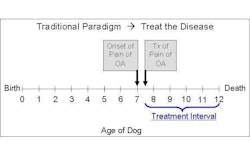Ancestral diet for people
A Way to Wellness
Imagine for a moment a relationship with food that springs from
the organic hungers of the body. There are no "forbidden
fruits," there is no philosophy to follow. You can eat when you
are hungry, until you feel full. The food is not hurtful to the
Earth and is very beneficial to your body. You will lose weight
automatically and maintain your ideal weight. You will be
protected from degenerative diseases. Food cravings will become
but a memory, and you will no longer need supplements. The
components of this diet are readily available at your local
supermarket and natural foods store.
Sound like another slick commercial come-on or New Age panacea? Actually, it's as old and indigenous as we are - as a species, that is. In its "born-again" form it is variously called "natural diet," "Paleolithic diet," "Native diet," and "ancestral diet." I prefer the latter term, as it is self-descriptive. In sharing recent findings, researchers in the fields of human nutrition and endocrinology, along with anthropologists and archaeologists, have been formulating what they consider to be the ideal diet. They are concluding that the ideal is the pre-agricultural diet on which our species evolved. It contains the foods that suit our digestion best and are least likely of all foods to cause an allergic reaction.
Many of us have already been seeking better health through conscious approaches to diet - vegetarianism, macrobiotics, food combining, supplement use, and reliance on organic foods are some of the most popular approaches. And many of us feel better and have more energy because of them. Yet most of the people I know are not fully satisfied. They still have food cravings to deal with, and some struggle with excess weight and/or chronic health problems. Some of my friends say they just plain don't feel satisfied from what they are eating.
Our foraging ancestors, and all pre-agricultural peoples, consumed foods that were easy to gather and edible in their raw state. They used little more technology than sharpened sticks and stones to gather their food and processed it minimally, if at all. Yet their diets were lush with vegetables, fruits, meat, fish, and nuts. They consumed five to ten times more fiber than we do, slightly more protein, and more fat.
Their fiber came in part from fruits and non-starchy vegetables, which made up a larger portion of their diet than ours, and in part from the quality of their produce. Ours has been hybridized to increase sugar and starch content, at the expense of fiber. They consumed better quality protein as well - more fish, leaner meat, and more nuts.
The dietary difference between us is based on the fact that our food sources changed dramatically when we became agriculturalists and herders. As our farm-fueled population expanded we increasingly supplanted animal protein with plant-source protein and nourishing plant foods with starch. We made this shift at the expense of fruits, vegetables, fish, and nuts (curiously, these are the very foods most health authorities now urge us to consume!).
The most stark change was an astronomic increase in complex carbohydrate (starch) consumption. Starch has become the backbone of our diet, whereas our ancestors consumed practically none. The only starch available to them was from tubers and the seeds of wild grasses, both of which were seasonal, small, and fibrous, making them laborious to gather and prepare. The same is true of sugars. Their virtually starch-free diet was the primary reason for their exemplary health; they suffered virtually no obesity, no diabetes, and no immune disorders (rheumatoid arthritis, tooth decay, osteoporosis, and appendicitis).
We can live our entire lives healthily without starch, but without fat we would become severely ill in a matter of weeks. We have but one hormone (insulin) to control the spike in blood sugar level caused by starch; we have four hormones to help raise blood sugar level, which traditionally remains low when fed by slowly digested fat. These factors indicate that we are designed to metabolize fat rather than starch.
Conventional wisdom would have us cringe at the thought of eating fat and snubbing starch. Fear of obesity and cardiovascular disease loom like razor-edged rocks before a rubber raft. But new findings by dietary specialists indicate that fat does not make fat - starch does. Because we metabolize fat slowly and efficiently, we burn it quite completely. Starch breaks down rapidly and floods the system with calories. The body's inability to burn them off as fast as they come triggers an immune response, and the body deals with it by dumping the excess as fat.
It's the quality rather than the quantity of fat we consume that affects the cardiovascular system. The fats of fish and wild animals actually help prevent heart disease; they have a healthy ratio of component oils. Surveys of Native diets indicate that the higher the consumption of these beneficial fats, the lower the incidence of many diseases.
Vegetable, seed, and legume oils were not part of our ancestral diet, so we did not evolve the capacity to healthily assimilate them. Nut and fruit oils (olive and avocado, for example), on the other hand, are part of our food history and remain healthful.
Many of us are already familiar with, and practicing, elements of our ancestral diet. The Atkins and Eades popular weight reducing diets are based on ancestral diet principles. Food combining and macrobiotics, the underlying principle of which is to eat what is naturally and seasonally available in your area, include ancestral approaches. However, in keeping with our cultural tendencies, we import "macrobiotic" foods, thereby negating the principle of eating locally.
Because the ancestral diet is not a philosophy or set of principles, but a list of foods our pre-agricultural ancestors ate, recently-evolved food crops upon which agricultural society are based are not included. Grains, legumes, and dairy foods, for example, often are major components of our present- day diet. But they played negligible roles in our ancestors' nutrition. Grains and legumes (and most tubers) have toxic properties, which protect them from being eaten. They were not consumed by our ancestors and we cannot digest them properly. Notice that corn, wheat, legumes (which include soy and peanuts), and milk are our most common food allergens.
Forty percent of our adult population shows some allergic response to dairy. Wheat and corn allergies are common. Legumes give most of us at least minimal digestive disturbance, and some legumes are rendered digestible only through processing. Many more of us, while not diagnosed as allergic to these foods, still have stressed immune systems - the instigator of autoimmune disease.
Our systems are stressed by these "indigestible" foods because we have not yet adapted to the onslaught of starch that agriculturalism has imposed upon us. We are only 400 or less generations removed from our foraging ancestors, and genetically, we're virtually identical to them. Our bodies want what they ate. (Our pets suffer from these foods as well, and for similar reasons. The cancer rate in dogs is skyrocketing, and dogs are afflicted with some of the same autoimmune diseases that visit us.)
All in a Day's Diet
So how do we reestablish our old diet? Let's visit our aboriginal past and experience a hypothetical day's meals:
Upon rising we sate our early hunger with a quick and easy meal of the blueberries and juneberries growing in the meadow before us, then round it out with a handful of nuts from our stores of last autumn. By late morning our appetites return, drawing us to the succulent fish roasting over the fire. While we were making rush mats for a lodge, two of our kin brought the fish up from our traps in the river, and gathered greens for the lunch as they made their way back. This morning the children, instructed by the women, set snares and deadfalls in the thicket just east of camp. Shadows now stretch across the valley - their signal to check the traps. Within minutes they are back with two lizards and a jackrabbit (the women and children generally provided more of the protein than did the men) to add to the flowers and mushrooms they gathered earlier in the afternoon. We look forward to an evening feast!
The Principle of the Thing
Of course in this day it is not practical for all of us to return to a fare of wild foraged foods. Our lifestyles wouldn't allow that, nor would our crowded Earth. But we can follow the principle with the foods available to us. Obviously, we're looking at an entirely new concept in food shopping! But don't let that dissuade you; the diet is quite easy to replicate without altering your food procurement routine. The following guidelines should help get you started.
- Shop the edges of your food store. There you'll find the ancestral foods - fruits, vegetables, fish, and meats. The taboo processed foods - grains and beans - are conveniently sequestered to the middle aisles.
- Buy organic, or even biodynamic, when possible, and choose free-range over grain-fed beef. It ain't wild, but it's the next best thing.
- Choose foods edible in their raw state, even if you plan to cook them.
- Select foods and proportions within the guidelines of the Ancestral Food Pyramid.
- Seek out new foods. The more varied your diet the more interesting and satisfying it will be and the more broad-based will be your nutritional support.
- Choose fish that is not pond raised. They are fed soy mash and do not compare nutritionally with their wild counterparts. Ocean salmon, for example, have twice the omega 3 fatty acids of their pen-raised kin.
- Eat a significant portion of your food raw or lightly cooked.
- Change your diet slowly to allow your intestinal flora to adjust. If you have any trouble (diarrhea, bloating, gas), eat greens for a couple days, then slowly add meat, nuts, and fruit, in that order.
- Incorporate some wild foraged foods.
Remember that what we eat and how we eat it is not a failsafe formula for health; it is only a component. We need clean air, clear water, and a lifestyle low in stress. We need the nourishment we gain from healing, sustaining relationships. Perhaps, eventually, we can gain these lessons from our ancestors as well. For now, we'll have to make do with their wisdom about food.















